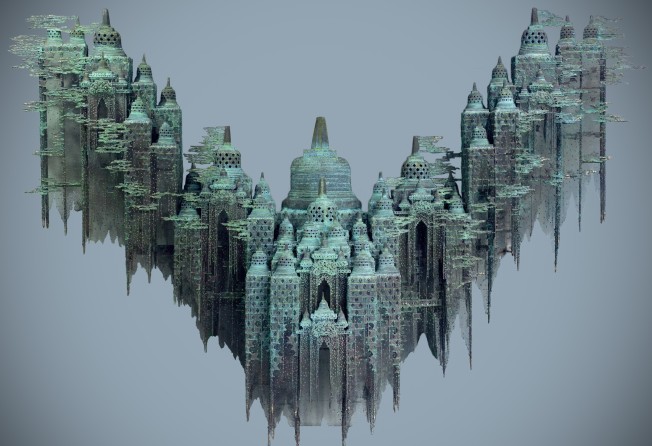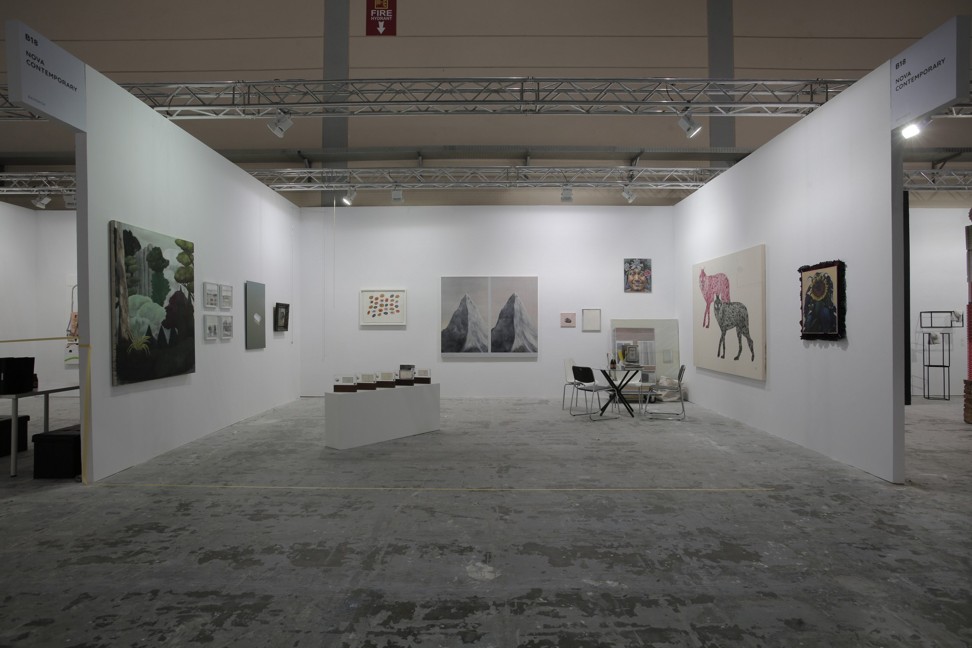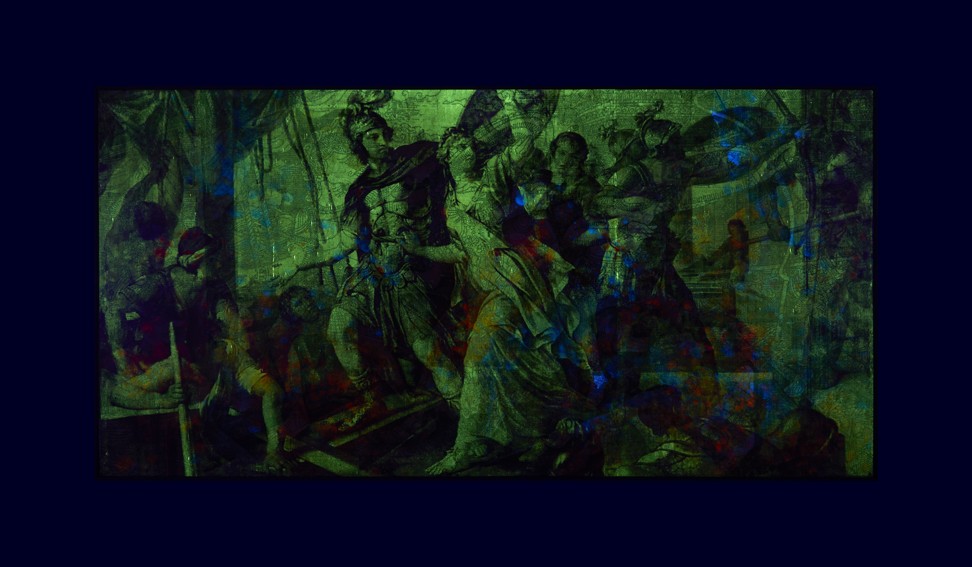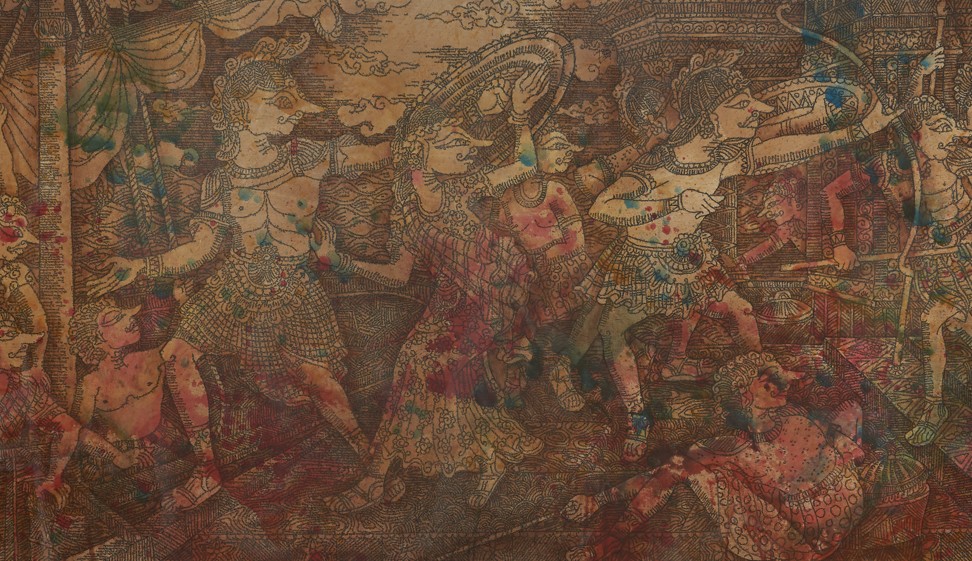
Dynamic, passionate, cheap: Art Jakarta fair praised for courage in showing young artists, and for its low prices
- Revamped fair focused on emerging Asian talent, in contrast to more established artists shown at Art Basel, and many works were priced very affordably
- Some collectors picked up works by young Indonesian artists for as little as US$1,000, while a new work by Filipino Ronald Ventura went for US$600,000

Art collectors and dealers who usually complain of fair fatigue were pleasantly surprised at this year’s Art Jakarta.
“It’s more exciting than other fairs, as galleries are more courageous about bringing young artists compared to Art Basel, for example, where it’s a very curated list,” says Singapore-based Indonesian collector Nathaniel Gunawan, who made several discoveries at the fair last weekend.
He snapped up a work by a young Thai painter, Aracha Cholitgul, as well as a small painting by Burmese multimedia artist Sawangwongse Yawnghwe – both at prices in the range of US$3,000 to US$5,000.
Belgian collector Alain Servais, who spent time visiting artists’ studios in Yogyakarta ahead of the fair, echoed this sentiment. “It’s a lively context with young people who are passionate and dynamic,” he says of the artists and exhibitors. “Relative to international standards it’s also extremely cheap.”

Unlike fairs such as Art Basel, which focus on blue-chip artists, Asian fairs provide international exposure for emerging talent, young galleries and local art collectives, alongside more established players.
Grass roots networks are thriving in Indonesian art hubs such as Yogyakarta, Bandung and parts of Jakarta, but contemporary art museums and fairs are largely missing from the country’s art infrastructure. The newly repackaged Art Jakarta fair – which coincided with a major gala and the opening of a Xu Bing retrospective at the world-class Museum Macan, owned by Indonesian collector Haryanto Adikoesoemo – is hoping to change that equation.
This year’s Art Jakarta – the 11th edition of the fair – was worlds apart from last year’s event, held in the low-ceilinged, carpeted ballroom of the Ritz-Carlton hotel.
With new director Tom Tandio at the helm, the transformation has been dramatic. Staged for the first time in the Jakarta Convention Centre (JCC) Senayan, the 2019 fair attracted 39,066 visitors over three days. Last year the event drew a crowd of some 40,000 but ran for four days.
The fair featured 70 galleries from 14 countries. About 70 per cent of the exhibitors were Southeast Asian galleries or international galleries with outposts in the region. Several international galleries, including Bangkok’s Nova Contemporary, Tokyo’s ShugoArts, Taipei’s TKG+ and London’s Flowers Gallery, took part for the first time.

Sales were brisk, with pieces by young Indonesian artists going for as little as US$1,000 and a new painting by Filipino auction favourite Ronald Ventura, Hot Young Wheels (2019), fetching an impressive US$600,000 after being sold to a collector in the Philippines. The latter is considered in the upper range for the artist, whose oils have ranged in price from US$31,856 to US$1.1 million at recent auctions.
Overseas and local attendees felt the quality of the fair and artists on view was impressive.
Like many fair goers this year, prominent Indonesian collector Wiyu Wahono gravitated to the festival-like “Art Jakarta Scene” section, which was supported by government-run creative agency Bekraft and featured 20 pop-up galleries by local artist collectives.
Among the emerging Indonesian artists that caught his attention was 30-year-old Bandung-based artist Bandu Darmawan. He showed quirky installations, including an animated wooden chess set that re-enacted the IBM computer Deep Blue’s historic defeat of chess champion Garry Kasparov, affordably priced at 15 million rupiah (US$1,054).

Wiyu also had his eye on Eddy Susanto’s Renaissance of Panji after The Abduction of Helen-Gavin Hamilton (2019), a striking painting done with fluorescent acrylic depicting a historic Javanese myth that, under UV light, reveals a European tableau. However, another buyer had already snapped up the US$12,800 work.
Local collector Rudi Lazuardi took home a mixed-media installation from Arario Gallery by Yogyakarta-based hot property Jompet Kuswidananto for US$22,000. Bale Project sold a volcanic ash and resin painting by Arin Dwihartanto Sunaryo to an Indonesian collector based in Europe for US$20,000, and had a long waiting list of European and Southeast Asian buyers clamouring for more.
Gajah Gallery sold three sculptures by Jendela group artist Yunizar priced just below US$100,000.
It’s not an easy market at the moment so there’s no time to sit down and have a whiskey. You have to get out there
Meanwhile, at Linda Gallery I Nyoman Nuarta’s copper and brass sculpture Freestyle (2019) sold for US$238,000. Three editions of his sculpture Borobudur IV (2018) and two editions of Wind II (2019) also sold, for US$168,000 each, to Indonesians and Singaporeans.
Tandio, the fair’s director, estimates that around 70 per cent of the collectors at this year’s fair were Indonesian and 30 per cent came from overseas.
“Contrary to popular belief, many Indonesian collectors [also] acquire works by [overseas] artists from China, Korea and the other countries in the region,” he says.
Galleries’ sales ledgers confirmed this. Seoul-based gallery Atelier Aki, for instance, sold three of Korean artist Yehsine Kang’s miniature book installations, priced between US$5,000 and US$24,000, to Indonesian and Malaysian collectors. On the upper end of the spectrum, at Art Agenda S. E. A, Taiwanese sculptor Li Chen’s large bronze piece Human Nature (2013), priced in the range of US$250,000, went to an Indonesian buyer.

Singapore-based dealer Can Yavuz, who sold nearly all the art he brought to the fair, observed that the tastes of collectors in Southeast Asia are evolving. Collectors are not only buying across the region, but younger collectors are also interested in new media, he says.
Yavuz gave the example of Filipino artist Keb Cedera’s coded painting, which attracted attention in his booth. The piece could be brought to life with a video game once viewers downloaded an app on their phones.
While overall the fair made a positive impression, not everything on display was of a high standard.
“You get art with a decorative element here which will probably not get the same acceptance in Europe,” says Art Jakarta fair consultant Gil Schneider. Still, he cautions against comparing Indonesia to more established markets and believes the scene is maturing.

Despite strong sales, Jasdeep Sandhu, founder of Gajah Gallery, says: “It’s not an easy market at the moment so there’s no time to sit down and have a whiskey. You have to get out there. But there is a lot of potential in the region. Growth is expected to be tremendous economically and culturally. Slowly, we are getting there.”